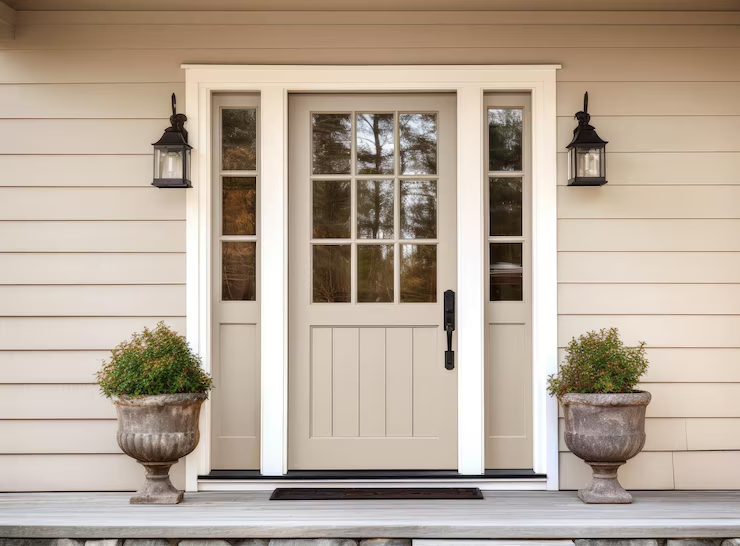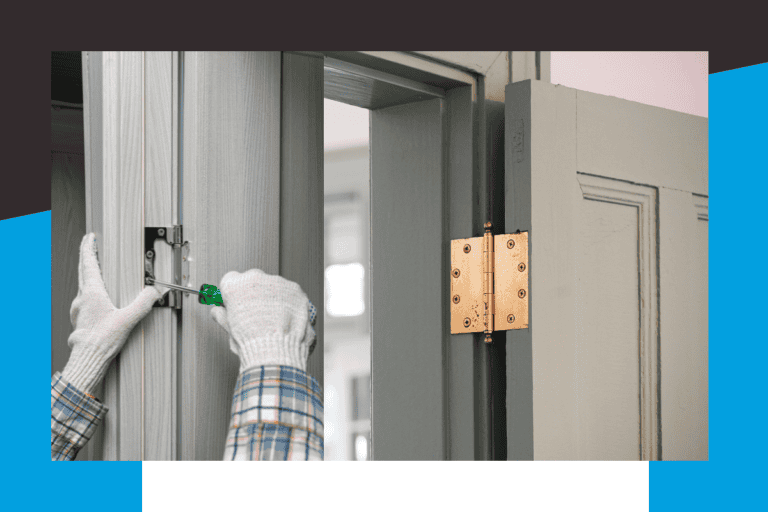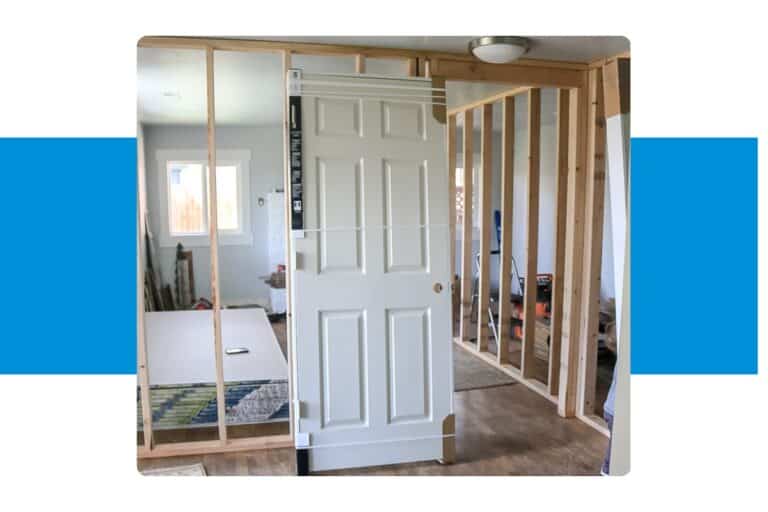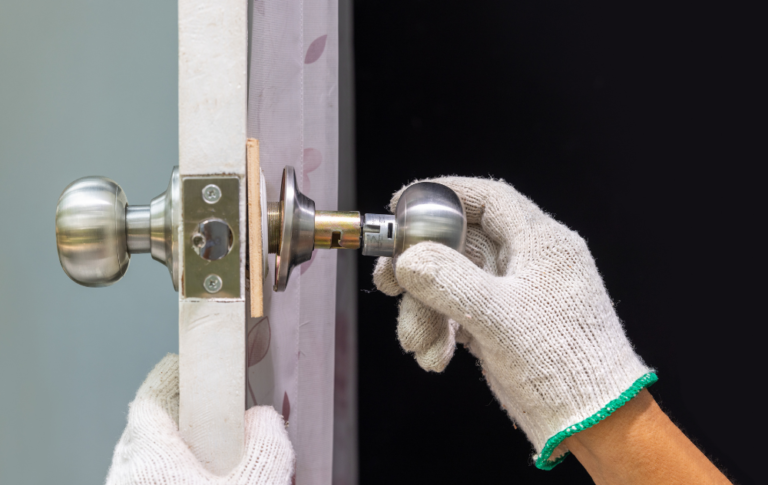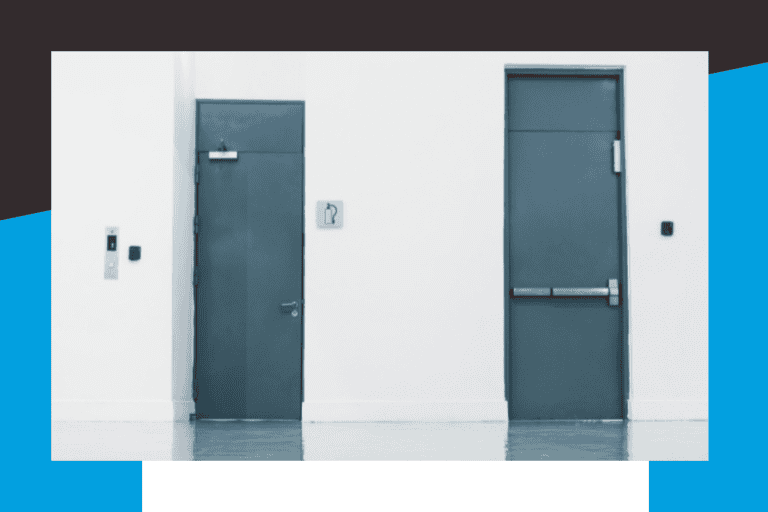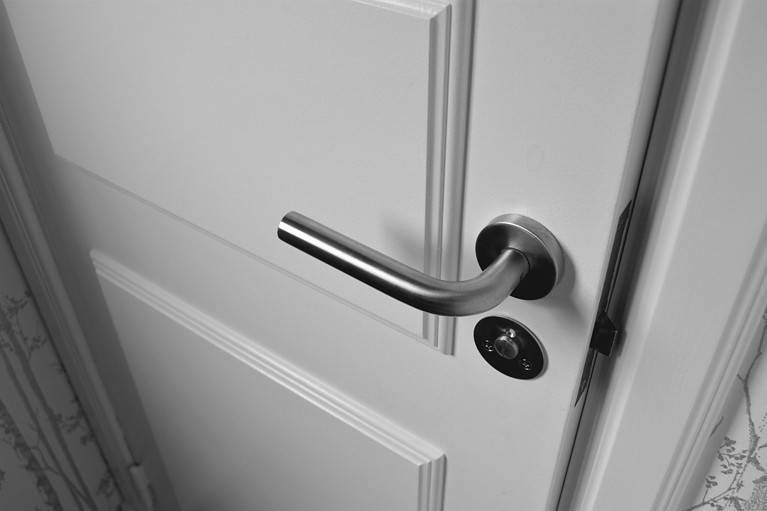Energy-Efficient Doors
In today’s world, where energy conservation and sustainability are becoming increasingly important, homeowners are constantly looking for ways to reduce their energy consumption. One often overlooked aspect of energy efficiency is the doors in our homes. Energy-efficient doors can have a significant impact on the overall energy efficiency of a house, providing numerous benefits for homeowners.
One of the primary benefits of energy-efficient doors is their ability to improve insulation. Traditional doors often have gaps and cracks that allow air to leak in and out, resulting in energy loss. Energy-efficient doors, on the other hand, are designed with advanced insulation materials and techniques to minimize air leakage. This improved insulation helps to maintain a consistent indoor temperature, reducing the need for heating or cooling systems to work harder and consume more energy.
Another advantage of energy-efficient doors is their ability to enhance soundproofing. These doors are constructed with materials that have excellent sound insulation properties, reducing the amount of noise that enters or leaves a room. This is particularly beneficial for homeowners living in noisy neighborhoods or near busy streets. By reducing noise pollution, energy-efficient doors create a more peaceful and comfortable living environment.
Energy-efficient doors also contribute to improved security. These doors are built with reinforced frames and high-quality locks, making them more resistant to break-ins and burglaries. By investing in energy-efficient doors, homeowners can have peace of mind knowing that their homes are well-protected against potential intruders.
Furthermore, energy-efficient doors can help homeowners save money on their energy bills. By reducing air leakage and improving insulation, these doors minimize the need for heating and cooling systems to run constantly. As a result, homeowners can enjoy lower energy consumption and reduced utility costs. Over time, the savings can add up significantly, making energy-efficient doors a wise long-term investment.
In addition to the financial benefits, energy-efficient doors also contribute to a greener and more sustainable future. By reducing energy consumption, these doors help to lower greenhouse gas emissions and combat climate change. As more homeowners opt for energy-efficient doors, the collective impact can be substantial, leading to a more sustainable society.
When it comes to choosing energy-efficient doors for your home, there are several factors to consider. Firstly, it is important to select doors that are certified by reputable energy efficiency organizations. These certifications ensure that the doors meet specific energy performance standards. Additionally, homeowners should consider the climate in which they live. Doors with different insulation properties are suitable for different climates, so it is essential to choose doors that are appropriate for your specific region.
In conclusion, energy-efficient doors offer numerous benefits for homeowners. From improved insulation and soundproofing to enhanced security and cost savings, these doors are a valuable addition to any home. Moreover, by reducing energy consumption and promoting sustainability, energy-efficient doors contribute to a greener future. When selecting energy-efficient doors, it is crucial to consider certifications and climate suitability. By investing in energy-efficient doors, homeowners can enjoy a more comfortable, secure, and environmentally friendly living space.
How Energy-Efficient Doors Can Help Reduce Your Energy Bills
In today’s world, where energy conservation is becoming increasingly important, finding ways to reduce our energy consumption and lower our bills is a top priority for many homeowners. One often overlooked aspect of energy efficiency is the doors we use in our homes. Energy-efficient doors can play a significant role in reducing energy loss and ultimately saving us money.
One of the primary ways energy-efficient doors help reduce energy bills is by minimizing air leakage. Traditional doors, especially older ones, tend to have gaps and cracks that allow air to escape or enter the house. This can lead to drafts, making it harder to maintain a comfortable indoor temperature. Energy-efficient doors, on the other hand, are designed with advanced sealing mechanisms that prevent air leakage, ensuring that the conditioned air stays inside and the outdoor air stays out.
Another way energy-efficient doors contribute to energy savings is through their insulation properties. These doors are typically made with materials that have high insulation values, such as fiberglass or insulated glass. This insulation helps to keep the heat out during the summer and the cold out during the winter, reducing the need for excessive heating or cooling. By maintaining a more stable indoor temperature, energy-efficient doors can significantly reduce the workload on your HVAC system, resulting in lower energy consumption and reduced energy bills.
Furthermore, energy-efficient doors often come with features that enhance their thermal performance. For instance, they may have multiple layers of glass with low-emissivity coatings that reflect heat back into the room, preventing it from escaping through the door. Some doors also have foam insulation cores that provide additional thermal resistance. These features work together to create a barrier against heat transfer, ensuring that your home remains comfortable while minimizing energy loss.
In addition to their insulation properties, energy-efficient doors are also designed to maximize natural light. They often feature larger glass panels or sidelights, allowing more sunlight to enter your home. This not only reduces the need for artificial lighting during the day but also helps to warm up your living spaces naturally. By harnessing the power of natural light, energy-efficient doors can further reduce your energy consumption and lower your bills.
It is worth noting that energy-efficient doors are not only beneficial for reducing energy bills but also for the environment. By consuming less energy, we can reduce our carbon footprint and contribute to a more sustainable future. Energy-efficient doors are a simple yet effective way to make a positive impact on both our wallets and the planet.
In conclusion, energy-efficient doors offer numerous advantages when it comes to reducing energy bills. Their ability to minimize air leakage, provide insulation, and maximize natural light all contribute to lower energy consumption and increased savings. By investing in energy-efficient doors, homeowners can enjoy a more comfortable living environment while also making a positive contribution to the environment. So, if you’re looking to lower your energy bills and improve energy efficiency in your home, consider upgrading to energy-efficient doors.
Choosing the Right Material for Energy-Efficient Doors
When it comes to energy efficiency, every aspect of your home matters. From insulation to windows, every component plays a crucial role in keeping your energy consumption in check. One often overlooked element is the choice of material for your doors. Energy-efficient doors can significantly reduce heat loss or gain, resulting in lower energy bills and a more comfortable living environment. In this article, we will explore the different materials available for energy-efficient doors and help you make an informed decision.
One of the most popular materials for energy-efficient doors is fiberglass. Fiberglass doors are known for their excellent insulation properties, making them an ideal choice for homeowners looking to maximize energy efficiency. The material’s low thermal conductivity helps prevent heat transfer, keeping your home cool in the summer and warm in the winter. Additionally, fiberglass doors are highly durable and require minimal maintenance, making them a cost-effective long-term investment.
Another option to consider is steel doors. Steel is a highly efficient material when it comes to insulation. Steel doors are typically filled with a foam core, which enhances their insulating properties. This foam core acts as a barrier, preventing heat from escaping or entering your home. Steel doors are also known for their strength and security, providing an added layer of protection for your home. However, it is important to note that steel doors may require periodic maintenance to prevent rusting.
Wood doors have long been a popular choice for homeowners due to their aesthetic appeal. However, when it comes to energy efficiency, wood doors may not be the most optimal choice. Wood is a natural insulator, but it is not as efficient as fiberglass or steel. Wood doors tend to have higher thermal conductivity, allowing more heat transfer. However, if you prefer the look and feel of wood, you can still improve energy efficiency by choosing a solid wood door with a high R-value or opting for a wood composite door that combines the beauty of wood with the insulation properties of other materials.
Vinyl doors are another option worth considering. Vinyl is a highly energy-efficient material that offers excellent insulation properties. Vinyl doors are typically filled with foam insulation, which helps reduce heat transfer. Additionally, vinyl is resistant to warping, cracking, and fading, making it a low-maintenance choice. However, it is important to ensure that the vinyl used in the door is of high quality, as lower-quality vinyl may be prone to cracking or discoloration over time.
In conclusion, choosing the right material for your energy-efficient doors is crucial for optimal efficiency. Fiberglass and steel doors are excellent choices, offering superior insulation properties and durability. Wood doors, while aesthetically pleasing, may not provide the same level of energy efficiency. However, solid wood doors with a high R-value or wood composite doors can still be viable options. Vinyl doors are also worth considering, as they offer excellent insulation and low maintenance. Ultimately, the choice of material will depend on your specific needs and preferences. By selecting the right material, you can ensure that your doors contribute to a more energy-efficient and comfortable home.
The Role of Insulation in Energy-Efficient Doors
When it comes to energy efficiency, doors play a crucial role in keeping the elements at bay and maintaining a comfortable indoor environment. Insulation, in particular, is a key factor in ensuring that doors are energy-efficient. In this article, we will explore the importance of insulation in energy-efficient doors and how it contributes to reducing energy consumption and costs.
Insulation acts as a barrier between the indoor and outdoor environments, preventing the transfer of heat and cold. In the case of doors, insulation helps to maintain a consistent temperature inside the building, regardless of the weather conditions outside. This is especially important during extreme weather conditions, such as hot summers or cold winters, when the demand for heating or cooling is high.
One of the primary benefits of insulation in energy-efficient doors is its ability to reduce heat loss or gain. Heat loss occurs when warm air escapes from the building, while heat gain happens when hot air enters the building. Insulation helps to minimize these effects by providing a layer of resistance to the transfer of heat. This, in turn, reduces the need for excessive heating or cooling, resulting in lower energy consumption and costs.
Another advantage of insulation in energy-efficient doors is its ability to improve soundproofing. Insulation materials, such as foam or fiberglass, have sound-absorbing properties that help to reduce noise transmission. This is particularly beneficial for buildings located in noisy areas or near busy streets. By minimizing the amount of noise that enters the building, insulation contributes to a more peaceful and comfortable indoor environment.
In addition to heat and sound insulation, energy-efficient doors with proper insulation also offer better protection against drafts and air leakage. Drafts occur when there are gaps or cracks around the door, allowing air to enter or escape. These drafts can lead to discomfort, as well as increased energy consumption as the heating or cooling system works harder to compensate for the air leakage. Insulation helps to seal these gaps, preventing drafts and reducing air leakage, thus improving energy efficiency.
Furthermore, insulation in energy-efficient doors can also contribute to better moisture control. Moisture can be a significant problem in buildings, as it can lead to mold growth, structural damage, and poor indoor air quality. Insulation materials with moisture-resistant properties help to prevent the buildup of moisture, reducing the risk of these issues. By maintaining a dry and healthy indoor environment, insulation contributes to the overall energy efficiency and longevity of the building.
In conclusion, insulation plays a vital role in energy-efficient doors by providing a barrier against heat loss or gain, improving soundproofing, reducing drafts and air leakage, and controlling moisture. These benefits not only contribute to a more comfortable indoor environment but also result in lower energy consumption and costs. When choosing energy-efficient doors, it is essential to consider the insulation properties to ensure maximum energy efficiency and long-term savings.
Energy-Efficient Doors: A Sustainable Choice for the Environment
In today’s world, where environmental concerns are at the forefront of many discussions, finding ways to reduce energy consumption and promote sustainability has become a top priority. One area where significant progress has been made is in the development of energy-efficient doors. These doors are designed to minimize heat transfer, reduce energy loss, and ultimately contribute to a more sustainable future.
One of the key features of energy-efficient doors is their insulation properties. These doors are constructed with materials that have high thermal resistance, such as fiberglass, wood, or metal with a polyurethane foam core. This insulation helps to prevent heat from escaping during the winter months and keeps cool air inside during the summer. By reducing the need for heating and cooling, energy-efficient doors can significantly lower energy consumption and utility bills.
Another important aspect of energy-efficient doors is their ability to minimize air leakage. Traditional doors often have gaps and cracks that allow air to seep in and out, leading to drafts and energy loss. Energy-efficient doors, on the other hand, are carefully sealed to prevent air leakage. They are equipped with weatherstripping and airtight seals that create a barrier against outside elements. This not only improves energy efficiency but also enhances indoor comfort by eliminating drafts and cold spots.
Furthermore, energy-efficient doors often feature multiple glazing layers. These layers consist of two or more panes of glass separated by an insulating gas, such as argon or krypton. The additional glazing helps to reduce heat transfer through the door, making it more energy-efficient. It also provides better sound insulation, reducing noise pollution from outside sources. This feature is particularly beneficial for homes located in busy urban areas or near highways.
In addition to their insulation and glazing properties, energy-efficient doors are also designed with sustainability in mind. Many manufacturers use eco-friendly materials and production processes to minimize their environmental impact. For example, some doors are made from recycled materials or sustainably sourced wood. Others are coated with low VOC (volatile organic compound) finishes, which reduce harmful emissions and improve indoor air quality. By choosing energy-efficient doors, homeowners can contribute to a greener future and reduce their carbon footprint.
It is worth noting that energy-efficient doors not only benefit the environment but also provide long-term cost savings. While they may have a higher upfront cost compared to traditional doors, the energy savings over time can offset this initial investment. Additionally, some governments and utility companies offer incentives and rebates for installing energy-efficient doors, further reducing the overall cost.
In conclusion, energy-efficient doors are a sustainable choice for the environment. Their insulation properties, ability to minimize air leakage, and multiple glazing layers make them highly energy-efficient. Moreover, their use of eco-friendly materials and production processes contributes to a greener future. By investing in energy-efficient doors, homeowners can reduce energy consumption, lower utility bills, and make a positive impact on the environment. It is a win-win situation that promotes sustainability and improves indoor comfort.
Enhancing Home Security with Energy-Efficient Doors
In today’s world, home security is a top priority for homeowners. With the increasing number of break-ins and burglaries, it is essential to take proactive measures to protect our homes and loved ones. One often overlooked aspect of home security is the type of doors we choose for our homes. Energy-efficient doors not only help reduce energy consumption but also enhance home security.
When it comes to home security, the first line of defense is the front door. It is the main entry point for potential intruders, and therefore, it is crucial to have a door that is strong and secure. Energy-efficient doors are designed with security in mind. They are made from durable materials such as steel or fiberglass, which are much stronger than traditional wooden doors. These materials are resistant to forced entry, making it difficult for intruders to break in.
Furthermore, energy-efficient doors are equipped with advanced locking systems. They often come with multi-point locking mechanisms that secure the door at multiple points along the frame. This makes it nearly impossible for intruders to force the door open. Additionally, some energy-efficient doors are equipped with smart lock technology, allowing homeowners to control and monitor their doors remotely. This added layer of security provides peace of mind, especially when homeowners are away from home.
Another important aspect of home security is the prevention of unauthorized access. Energy-efficient doors are designed to fit tightly within the door frame, leaving no gaps or spaces for intruders to exploit. This prevents the door from being easily pried open or manipulated. Additionally, energy-efficient doors often come with reinforced frames and hinges, further enhancing their resistance to break-ins.
In addition to their security features, energy-efficient doors also offer significant energy-saving benefits. These doors are designed to be highly insulated, preventing heat transfer between the inside and outside of the home. This means that during the hot summer months, cool air from the air conditioning system stays inside, while during the cold winter months, warm air from the heating system is retained. As a result, homeowners can enjoy a more comfortable living environment while reducing their energy consumption and utility bills.
Moreover, energy-efficient doors also contribute to a more sustainable and eco-friendly lifestyle. By reducing energy consumption, homeowners can lower their carbon footprint and help protect the environment. This is particularly important in today’s world, where climate change and environmental degradation are pressing issues.
In conclusion, energy-efficient doors are an excellent investment for homeowners looking to enhance their home security. These doors are designed with durability and strength in mind, making them resistant to forced entry. They also come with advanced locking systems and tight-fitting frames, preventing unauthorized access. Additionally, energy-efficient doors offer significant energy-saving benefits, reducing utility bills and contributing to a more sustainable lifestyle. By choosing energy-efficient doors, homeowners can enjoy the peace of mind that comes with enhanced security and the satisfaction of making an environmentally conscious choice.
Energy-Efficient Doors: Aesthetics and Design Options
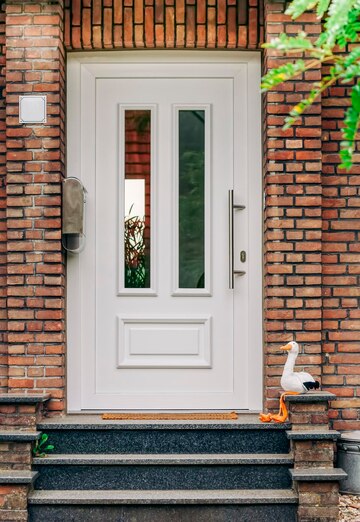
When it comes to energy efficiency, doors are often overlooked. However, choosing the right door can have a significant impact on the energy efficiency of your home. Not only can energy-efficient doors help reduce your carbon footprint, but they can also save you money on your energy bills. In this article, we will explore the aesthetics and design options available for energy-efficient doors.
One of the misconceptions about energy-efficient doors is that they are limited in terms of design options. However, this couldn’t be further from the truth. Energy-efficient doors come in a wide range of styles, materials, and finishes, allowing you to find the perfect door that complements your home’s aesthetics.
One popular option for energy-efficient doors is fiberglass. Fiberglass doors are not only durable and low-maintenance but also highly energy-efficient. They have excellent insulation properties, which help keep your home warm in the winter and cool in the summer. Additionally, fiberglass doors can be customized to mimic the look of wood, providing a classic and elegant appearance.
Another design option for energy-efficient doors is vinyl. Vinyl doors are known for their exceptional energy efficiency and durability. They are resistant to warping, cracking, and fading, making them an excellent choice for areas with extreme weather conditions. Vinyl doors are available in a variety of colors and finishes, allowing you to find the perfect door that matches your home’s style.
For those who prefer a more traditional look, wood doors are also available in energy-efficient options. Wood doors provide a timeless and sophisticated appearance, adding a touch of elegance to any home. However, it is important to choose wood doors that are specifically designed to be energy-efficient. These doors are typically made with multiple layers of wood and insulation, ensuring maximum energy efficiency without compromising on aesthetics.
In addition to the material options, energy-efficient doors also come in various styles and designs. Whether you prefer a sleek and modern look or a more traditional and ornate design, there is a wide range of options to choose from. From simple and minimalist designs to intricate paneling and glass inserts, energy-efficient doors can be customized to suit your personal style and preferences.
When selecting an energy-efficient door, it is essential to consider the overall performance and features. Look for doors with high-quality weatherstripping and insulation to prevent air leakage and improve energy efficiency. Additionally, consider doors with low-emissivity (low-E) glass, which helps reduce heat transfer and UV rays, further enhancing energy efficiency.
In conclusion, energy-efficient doors offer a wide range of aesthetics and design options. From fiberglass to vinyl and wood, there are materials to suit every style and preference. Whether you prefer a modern or traditional look, energy-efficient doors can be customized to complement your home’s aesthetics. When choosing an energy-efficient door, consider the overall performance and features, such as weatherstripping, insulation, and low-E glass. By selecting the right energy-efficient door, you can enhance the beauty of your home while reducing your energy consumption and saving money on your energy bills.
The Importance of Proper Installation for Energy-Efficient Doors
In today’s world, where energy conservation is becoming increasingly important, homeowners are constantly looking for ways to reduce their energy consumption. One effective way to achieve this is by installing energy-efficient doors. These doors are designed to minimize heat transfer between the inside and outside of a home, resulting in lower energy bills and a more comfortable living environment. However, it is crucial to understand that the benefits of energy-efficient doors can only be fully realized if they are properly installed.
Proper installation is essential because even the most energy-efficient door will not perform optimally if it is not installed correctly. A poorly installed door can have gaps and cracks that allow air to leak in and out, compromising its energy-saving capabilities. This can lead to drafts, temperature fluctuations, and increased energy usage. Therefore, it is crucial to hire a professional installer who has the knowledge and expertise to ensure that the door is installed correctly.
One of the key aspects of proper installation is ensuring a tight seal around the door. This involves using weatherstripping and caulk to seal any gaps between the door and the frame. Weatherstripping is a material that is applied to the edges of the door to create a seal when it is closed. It helps to prevent air leakage and improve energy efficiency. Caulk, on the other hand, is used to seal any gaps or cracks in the frame. It is applied to the exterior and interior of the door frame to create an airtight seal.
Another important consideration during installation is the use of insulation. Insulation helps to reduce heat transfer through the door, making it more energy-efficient. It is typically installed in the door frame and around the edges to provide an additional barrier against air leakage. Proper insulation ensures that the door can effectively keep the outside air out and the inside air in, resulting in lower energy consumption.
Additionally, proper installation includes ensuring that the door is properly aligned and balanced. This is important because an improperly aligned door can cause it to not close properly, leading to gaps and air leakage. A professional installer will ensure that the door is aligned correctly and that all the necessary adjustments are made to ensure a tight fit.
Furthermore, proper installation also involves the use of high-quality materials and hardware. Energy-efficient doors are typically made of materials that have excellent insulation properties, such as fiberglass or insulated steel. These materials help to minimize heat transfer and improve energy efficiency. Additionally, high-quality hardware, such as weather-resistant hinges and airtight seals, is essential for ensuring that the door functions properly and provides maximum energy savings.
In conclusion, energy-efficient doors offer numerous benefits, including lower energy bills and a more comfortable living environment. However, to fully realize these benefits, it is crucial to ensure that the doors are properly installed. Proper installation involves creating a tight seal, using insulation, aligning the door correctly, and using high-quality materials and hardware. By investing in professional installation, homeowners can maximize the energy-saving potential of their energy-efficient doors and enjoy a more energy-efficient home.
Energy-Efficient Doors: Noise Reduction and Soundproofing
In today’s world, where noise pollution is becoming increasingly prevalent, finding ways to create a peaceful and quiet environment within our homes has become a top priority for many homeowners. One effective solution to combat noise pollution is investing in energy-efficient doors that offer noise reduction and soundproofing capabilities. These doors not only help to create a serene living space but also contribute to energy savings and a more sustainable lifestyle.
Energy-efficient doors are designed with advanced technology and materials that effectively block out external noise, providing a peaceful and tranquil atmosphere inside the home. These doors are constructed with multiple layers of insulation, which act as a barrier against sound waves, preventing them from entering the living space. The insulation materials used in these doors are specifically chosen for their sound-absorbing properties, ensuring maximum noise reduction.
One of the key features of energy-efficient doors is their ability to seal tightly, preventing air leaks and reducing noise transmission. These doors are equipped with weatherstripping and seals that create an airtight seal when closed, minimizing the passage of sound waves. This not only helps to keep unwanted noise out but also improves energy efficiency by preventing drafts and heat loss, resulting in lower energy bills.
Furthermore, energy-efficient doors are often equipped with specialized glass that further enhances their noise reduction capabilities. These doors feature double or triple-pane glass with a layer of gas in between, which acts as an additional sound barrier. The gas-filled space between the glass panes helps to absorb sound waves, reducing noise transmission significantly. Additionally, the glass used in these doors is often laminated, which further enhances soundproofing by reducing vibrations and minimizing sound penetration.
Investing in energy-efficient doors not only provides noise reduction benefits but also contributes to a more sustainable lifestyle. These doors are designed to be highly energy-efficient, helping to reduce energy consumption and lower carbon emissions. By preventing drafts and heat loss, energy-efficient doors help to maintain a consistent indoor temperature, reducing the need for heating or cooling systems. This not only saves energy but also reduces the strain on the environment.
Moreover, energy-efficient doors are often made from sustainable materials, such as recycled wood or fiberglass, which are not only durable but also eco-friendly. These materials are sourced responsibly, ensuring minimal impact on the environment. By choosing energy-efficient doors, homeowners can make a conscious choice to support sustainable practices and reduce their carbon footprint.
In conclusion, energy-efficient doors offer a multitude of benefits, including noise reduction and soundproofing capabilities. These doors are designed with advanced insulation materials and technology that effectively block out external noise, creating a peaceful and quiet living space. Additionally, energy-efficient doors contribute to energy savings and a more sustainable lifestyle by preventing drafts, reducing energy consumption, and using eco-friendly materials. Investing in energy-efficient doors is a wise choice for homeowners looking to create a serene environment while also making a positive impact on the environment.
Understanding Energy Ratings for Doors
When it comes to making our homes more energy-efficient, we often think about insulation, windows, and appliances. However, one area that is often overlooked is the doors. Energy-efficient doors can play a significant role in reducing energy consumption and improving the comfort of our homes. In this article, we will explore the importance of energy ratings for doors and how they can help us make informed decisions when choosing the right door for our homes.
Energy ratings for doors are designed to provide consumers with information about the energy performance of a particular door. These ratings are based on a variety of factors, including the door’s insulation properties, air leakage, and solar heat gain coefficient. By understanding these ratings, homeowners can make informed decisions about which doors will provide the best energy savings for their homes.
One of the most important factors to consider when looking at energy ratings for doors is the door’s insulation properties. Insulation is crucial in preventing heat transfer between the inside and outside of a home. Doors with high insulation properties will help keep the cold air out during the winter and the hot air out during the summer, reducing the need for heating and cooling systems. Look for doors with a high R-value, which indicates excellent insulation properties.
Another factor to consider is air leakage. Even the most well-insulated door can be rendered ineffective if it allows air to leak through gaps and cracks. Energy ratings for doors include a measurement called the air leakage rate, which indicates how much air can pass through the door. The lower the air leakage rate, the more energy-efficient the door is. Look for doors with a low air leakage rate to ensure maximum energy savings.
Solar heat gain coefficient is another important factor to consider when looking at energy ratings for doors. This measurement indicates how much solar heat is transmitted through the door. Doors with a low solar heat gain coefficient will help keep the heat out during the summer, reducing the need for air conditioning. Look for doors with a low solar heat gain coefficient to maximize energy efficiency.
Understanding energy ratings for doors is essential for making informed decisions when choosing the right door for your home. By considering factors such as insulation properties, air leakage, and solar heat gain coefficient, homeowners can select doors that will provide the best energy savings and improve the comfort of their homes.
In addition to energy ratings, there are other features to consider when choosing an energy-efficient door. For example, doors with multiple panes of glass, filled with insulating gas, can provide better insulation than single-pane doors. Additionally, weatherstripping and a tight seal around the door frame can help prevent air leakage.
It is also worth noting that energy-efficient doors not only save energy but also contribute to a more sustainable environment. By reducing energy consumption, we can decrease our carbon footprint and help combat climate change. Investing in energy-efficient doors is not only beneficial for our wallets but also for the planet.
In conclusion, understanding energy ratings for doors is crucial for homeowners looking to make their homes more energy-efficient. By considering factors such as insulation properties, air leakage, and solar heat gain coefficient, homeowners can select doors that will provide the best energy savings and improve the comfort of their homes. Additionally, features such as multiple panes of glass, insulating gas, and weatherstripping can further enhance the energy efficiency of a door. By investing in energy-efficient doors, we can not only save money but also contribute to a more sustainable future.
Maintaining and Caring for Energy-Efficient Doors
Energy-efficient doors are a great investment for any homeowner looking to reduce their energy consumption and lower their utility bills. However, like any other household item, these doors require regular maintenance and care to ensure their longevity and optimal performance. In this section, we will discuss some essential tips for maintaining and caring for energy-efficient doors.
First and foremost, it is crucial to keep the door clean. Regularly wiping down the door with a mild detergent and water solution will help remove any dirt, dust, or grime that may accumulate over time. It is important to avoid using harsh chemicals or abrasive cleaners, as they can damage the door’s finish. Additionally, be sure to dry the door thoroughly after cleaning to prevent any water damage.
Another important aspect of maintaining energy-efficient doors is to regularly inspect the weatherstripping. Weatherstripping is a crucial component of these doors as it helps to seal any gaps or cracks, preventing drafts and air leakage. Over time, weatherstripping can become worn or damaged, compromising its effectiveness. Therefore, it is essential to inspect the weatherstripping regularly and replace it if necessary. This simple task can significantly improve the door’s energy efficiency.
In addition to weatherstripping, it is also important to check the door’s seals and hinges. Over time, seals can become loose or damaged, allowing air to escape or enter the home. Similarly, hinges can become loose or squeaky, affecting the door’s overall performance. Regularly inspecting and tightening seals and hinges can help maintain the door’s energy efficiency and ensure smooth operation.
Furthermore, it is crucial to keep the door’s hardware in good condition. This includes regularly lubricating the door’s locks, handles, and hinges to prevent rust and ensure smooth operation. Using a silicone-based lubricant is recommended as it is less likely to attract dirt and debris. Additionally, be sure to tighten any loose screws or bolts to prevent further damage.
Another important aspect of caring for energy-efficient doors is to protect them from extreme weather conditions. Direct exposure to sunlight, rain, snow, and extreme temperatures can cause the door’s finish to fade or deteriorate over time. To protect the door, consider installing a storm door or using window film to reduce the amount of direct sunlight it receives. Additionally, applying a protective coating or sealant can help prolong the door’s lifespan and maintain its energy efficiency.
Lastly, it is essential to address any issues or damages promptly. If you notice any cracks, dents, or warping in the door, it is important to address them as soon as possible. Ignoring these issues can lead to further damage and compromise the door’s energy efficiency. If necessary, consult a professional to assess and repair any significant damages.
In conclusion, maintaining and caring for energy-efficient doors is essential to ensure their optimal performance and longevity. Regular cleaning, inspecting weatherstripping, seals, and hinges, lubricating hardware, protecting from extreme weather conditions, and addressing any damages promptly are all crucial steps in maintaining these doors. By following these tips, homeowners can enjoy the benefits of energy-efficient doors for years to come.
Energy-Efficient Doors: Improving Indoor Comfort
In today’s world, where environmental concerns are at the forefront of many people’s minds, finding ways to reduce energy consumption and increase efficiency has become a top priority. One area where significant improvements can be made is in the design and construction of doors. Energy-efficient doors not only help to reduce energy waste but also improve indoor comfort by keeping the elements out and maintaining a consistent temperature inside.
One of the key features of energy-efficient doors is their insulation properties. These doors are designed with materials that have high thermal resistance, such as fiberglass or insulated steel. This insulation helps to prevent heat transfer between the inside and outside of a building, reducing the need for heating or cooling systems to work harder to maintain a comfortable temperature. By keeping the cold air out in the winter and the hot air out in the summer, energy-efficient doors help to create a more comfortable living environment.
Another important aspect of energy-efficient doors is their ability to minimize air leakage. Traditional doors often have gaps and cracks that allow air to escape or enter, leading to drafts and temperature fluctuations. Energy-efficient doors, on the other hand, are carefully sealed to prevent air leakage. They are equipped with weatherstripping and airtight seals that create a barrier against the elements. This not only improves indoor comfort but also helps to reduce energy consumption by minimizing the need for heating or cooling systems to compensate for air leakage.
In addition to their insulation and air sealing properties, energy-efficient doors also often feature multiple glazing layers. These layers of glass or other transparent materials help to further enhance the door’s thermal performance by reducing heat transfer. The space between the layers is often filled with insulating gases, such as argon or krypton, which provide additional insulation. This multi-layered glazing not only improves energy efficiency but also helps to reduce noise transmission, creating a quieter and more peaceful indoor environment.
Furthermore, energy-efficient doors are often designed with low-emissivity (low-e) coatings. These coatings are applied to the glass surfaces and help to reflect heat back into the room, preventing it from escaping through the door. This not only improves energy efficiency but also helps to reduce condensation on the glass, keeping the door clear and maintaining visibility.
In conclusion, energy-efficient doors are a valuable investment for any homeowner or building owner looking to improve indoor comfort and reduce energy consumption. With their insulation properties, air sealing features, multi-layered glazing, and low-e coatings, these doors help to keep the elements out and maintain a consistent temperature inside. By reducing the need for heating or cooling systems to work harder, energy-efficient doors not only save energy but also create a more comfortable living environment. So, whether you are looking to upgrade your existing doors or are in the process of constructing a new building, consider the benefits of energy-efficient doors and make a positive impact on both your comfort and the environment.
Energy-Efficient Doors vs. Traditional Doors: What’s the Difference?
When it comes to choosing doors for your home, there are many factors to consider. One important consideration is energy efficiency. Energy-efficient doors are designed to minimize heat transfer between the inside and outside of your home, helping to keep your living spaces comfortable and reducing your energy bills. But what exactly sets energy-efficient doors apart from traditional doors?
The main difference lies in the materials and construction of the doors. Energy-efficient doors are typically made with multiple layers of insulation, such as foam or fiberglass, which help to prevent heat from escaping or entering your home. These doors are also often equipped with weatherstripping and airtight seals to further enhance their energy-saving capabilities. In contrast, traditional doors are usually made with a single layer of wood or metal, which provides little insulation and allows for more heat transfer.
Another key difference between energy-efficient doors and traditional doors is the presence of low-emissivity (low-E) glass. Low-E glass is coated with a thin layer of metallic oxide, which helps to reflect heat back into your home during the winter and block out heat during the summer. This special glass not only improves the energy efficiency of the door but also reduces the fading of furniture and flooring caused by UV rays.
In addition to their superior insulation and low-E glass, energy-efficient doors often feature advanced locking systems and tight-fitting frames. These features help to minimize air leakage and drafts, ensuring that your home remains comfortable and energy-efficient year-round. Traditional doors, on the other hand, may have gaps or loose fittings that allow air to escape or enter, leading to energy loss and decreased comfort.
Energy-efficient doors also offer benefits beyond energy savings. They can help to reduce noise transmission, making your home quieter and more peaceful. Additionally, these doors are often more durable and require less maintenance than traditional doors. Their advanced construction and materials make them resistant to warping, rotting, and other common issues that can affect the lifespan of traditional doors.
While energy-efficient doors may have a higher upfront cost compared to traditional doors, the long-term savings they provide can outweigh this initial investment. By reducing your energy consumption, these doors can significantly lower your heating and cooling bills, saving you money in the long run. Moreover, many energy-efficient doors qualify for government incentives and rebates, further offsetting their cost.
In conclusion, energy-efficient doors offer several advantages over traditional doors. Their superior insulation, low-E glass, and advanced locking systems make them highly effective at reducing heat transfer and improving energy efficiency. These doors also provide additional benefits such as noise reduction and increased durability. Although they may have a higher initial cost, the long-term savings and potential incentives make energy-efficient doors a wise investment for any homeowner looking to improve their home’s energy efficiency and comfort.
Energy-Efficient Doors for Commercial Buildings and Offices
In today’s world, energy efficiency has become a top priority for businesses and organizations. With rising energy costs and growing concerns about the environment, finding ways to reduce energy consumption has become essential. One area where businesses can make a significant impact is through the use of energy-efficient doors.
Energy-efficient doors are designed to minimize heat transfer between the interior and exterior of a building. By preventing the loss of conditioned air and reducing the infiltration of outside air, these doors can help businesses save on heating and cooling costs. Additionally, energy-efficient doors can also improve the comfort of a building by reducing drafts and maintaining a consistent indoor temperature.
One of the key features of energy-efficient doors is their insulation properties. These doors are typically made with materials that have high thermal resistance, such as fiberglass or insulated metal. The insulation helps to create a barrier that prevents heat from escaping or entering the building. This can significantly reduce the amount of energy needed to heat or cool the space, resulting in lower energy bills.
Another important aspect of energy-efficient doors is their airtightness. These doors are designed to minimize air leakage, which can be a major source of energy loss. By using weatherstripping and seals, energy-efficient doors can effectively seal off the building from the outside elements. This not only helps to maintain a comfortable indoor environment but also reduces the workload on heating and cooling systems.
In addition to insulation and airtightness, energy-efficient doors also often feature low-emissivity (low-e) glass. Low-e glass is coated with a thin layer of metallic oxide that reflects heat while allowing light to pass through. This helps to reduce heat gain in the summer and heat loss in the winter, further improving the energy efficiency of the door.
When it comes to choosing energy-efficient doors for commercial buildings and offices, there are several factors to consider. First and foremost, it is important to select doors that are properly sized and installed. A door that does not fit properly or is not installed correctly can compromise its energy efficiency. It is also crucial to consider the climate and location of the building. Doors that are suitable for a cold climate may not be as effective in a hot and humid environment.
Furthermore, it is essential to look for doors that have been certified by reputable organizations, such as ENERGY STAR. ENERGY STAR-certified doors meet strict energy efficiency standards and have been independently tested and verified. By choosing certified doors, businesses can have confidence in their energy-saving capabilities.
In conclusion, energy-efficient doors offer numerous benefits for commercial buildings and offices. They can help businesses save on energy costs, improve indoor comfort, and reduce their environmental impact. By selecting doors with proper insulation, airtightness, and low-e glass, businesses can make a significant difference in their energy consumption. It is important to choose doors that are properly sized, installed, and certified to ensure maximum energy efficiency. With the right doors in place, businesses can take a step towards a more sustainable future.
Upgrading to Energy-Efficient Doors: Return on Investment and Resale Value
In today’s world, energy efficiency is a top priority for homeowners. With rising energy costs and growing concerns about the environment, finding ways to reduce energy consumption has become essential. One area where homeowners can make a significant impact is by upgrading to energy-efficient doors. Not only can this improve the comfort and energy efficiency of a home, but it can also provide a solid return on investment and increase resale value.
When it comes to energy efficiency, doors play a crucial role. Traditional doors often have gaps and cracks that allow air to leak in and out, resulting in energy loss. Energy-efficient doors, on the other hand, are designed to minimize air leakage and provide better insulation. They are typically made with materials that have high thermal resistance, such as fiberglass or insulated steel, and are equipped with weatherstripping and airtight seals.
By upgrading to energy-efficient doors, homeowners can significantly reduce their energy consumption and lower their utility bills. These doors help to keep the indoor temperature stable by preventing drafts and heat transfer. In the summer, they keep the cool air inside, while in the winter, they prevent cold air from seeping in. This means that homeowners can rely less on their heating and cooling systems, resulting in substantial energy savings.
The return on investment for energy-efficient doors is impressive. According to a study conducted by the U.S. Department of Energy, homeowners can expect to recoup around 70-80% of the cost of an energy-efficient door when they sell their home. This means that not only will homeowners enjoy the benefits of energy savings while living in their home, but they will also see a significant return on their initial investment when it comes time to sell.
In addition to the financial benefits, upgrading to energy-efficient doors can also enhance the resale value of a home. Potential buyers are increasingly looking for energy-efficient features when searching for a new home. They understand the long-term cost savings and environmental benefits that come with energy-efficient upgrades. By having energy-efficient doors in place, homeowners can attract more buyers and potentially sell their home at a higher price.
It’s important to note that not all energy-efficient doors are created equal. Homeowners should look for doors that have been certified by reputable organizations, such as ENERGY STAR. These certifications ensure that the doors meet strict energy efficiency standards and have been independently tested and verified. By choosing certified doors, homeowners can have peace of mind knowing that they are investing in high-quality, energy-efficient products.
In conclusion, upgrading to energy-efficient doors is a wise investment for homeowners. Not only do these doors improve the comfort and energy efficiency of a home, but they also provide a solid return on investment and increase resale value. By reducing energy consumption and lowering utility bills, homeowners can enjoy immediate financial benefits. Additionally, the long-term value of energy-efficient doors is evident when it comes time to sell, as potential buyers are increasingly seeking energy-efficient features. By choosing certified doors, homeowners can ensure that they are investing in high-quality, energy-efficient products that will provide lasting benefits for years to come.
